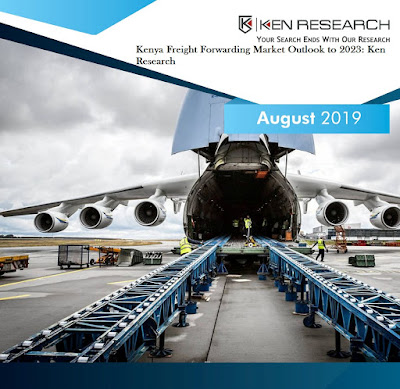Market Overview
The international movement of commodities via a single or a number of carriers is the freight forwarding market, which consists of sales of freight forwarding services by businesses. Logistics planning, coordination, and shipment flow for the movement of commodities across international borders are referred to as freight forwarding. The freight forwarder handles container tracking, freight consolidation, customs documentation, and freight pricing negotiations.
The main factor for Kenya Freight Forwarding Market is the demand for freight forwarding services, which will anticipate rising due to growing worldwide trade and domestic industry. Additionally, Government programs like the Standard Gauge Railway (SGR), Kenya's advantageous location as the entrance to East Africa, and the thriving retail and import industries were also the drivers of the boost in the market.
Report Analysis
According to the research report, “Kenya Freight Forwarding Market Outlook to 2023 – By Sea, Land, Air, Rail, and Pipeline Freight; International and Domestic Freight, Integrated and Contract Logistics Freight Forwarding” states that the volume of international trade is increasing, which has a big impact on the Kenya freight forwarding market. Global trade is the exchange of goods and services across nations, which will allow consumers and nations the chance to experience products and services that are either unavailable or more expensive domestically. On behalf of shippers, freight forwarders plan the intermodal transportation of commodities, and greater trade volume will increase freight forwarding activities.
Due to the dominant need for road transportation for deliveries in rural areas, to adjacent countries that are landlocked, and for last-mile deliveries, road transportation dominates the Kenya Freight Forwarding Market. In Kenya, sea freight is the most common mode of transportation after road freight. Since the Mombasa Port is one of the biggest commercial ports in all of Africa, it is mostly used for international freight. Currently, only a small amount of freight travels by rail, but with the advent of SGR, this number is anticipated to rise.
Competitive Landscape
With over 400 domestic and foreign firms, the Kenyan freight forwarding business is extremely fragmented. Despite being limited, the overseas players own around 70% of the market. Almost all transporters and truckers are local and regional, whereas multi-service organizations are typically global. In terms of factors like technology, efficiency, service offerings, and pricing, the sector is in a growth phase.
A number of mergers and acquisitions are happening in an effort to gain market share, and there is also a shakeout of smaller businesses that cannot survive in the competitive environment. Some major key players in the Kenya Freight Forwarding Market are DHL, DB Schenker, CEVA Logistics, FedEx TNT, Agility Logistics, Panalpina, and others.
Request for Sample Report @ https://www.kenresearch.com/sample-report.php?Frmdetails=MjQwNzYz
Future Prospects
The market is anticipated to expand at a positive CAGR in the double figures, with one of the major development factors being the expansion of the E-commerce market due to increased online product purchases. The market is also seen to benefit from the government of Kenya's increased annual expenditure on infrastructure and development projects including the LAPSSET corridor, SGR, and upgrading the state of the road, sea, and air transport networks. Due to such factors, new businesses continue to enter the market regardless of tariffs or other trade restrictions.
For More Information on the research report, refer to below link:-
Kenya Freight Forwarding Market Outlook
Related Reports:-
Follow Us
LinkedIn | Facebook | Twitter | YouTube
Contact Us:-
Ken Research
Ankur Gupta, Head Marketing & Communications
Support@kenresearch.com
+91-9015378249


